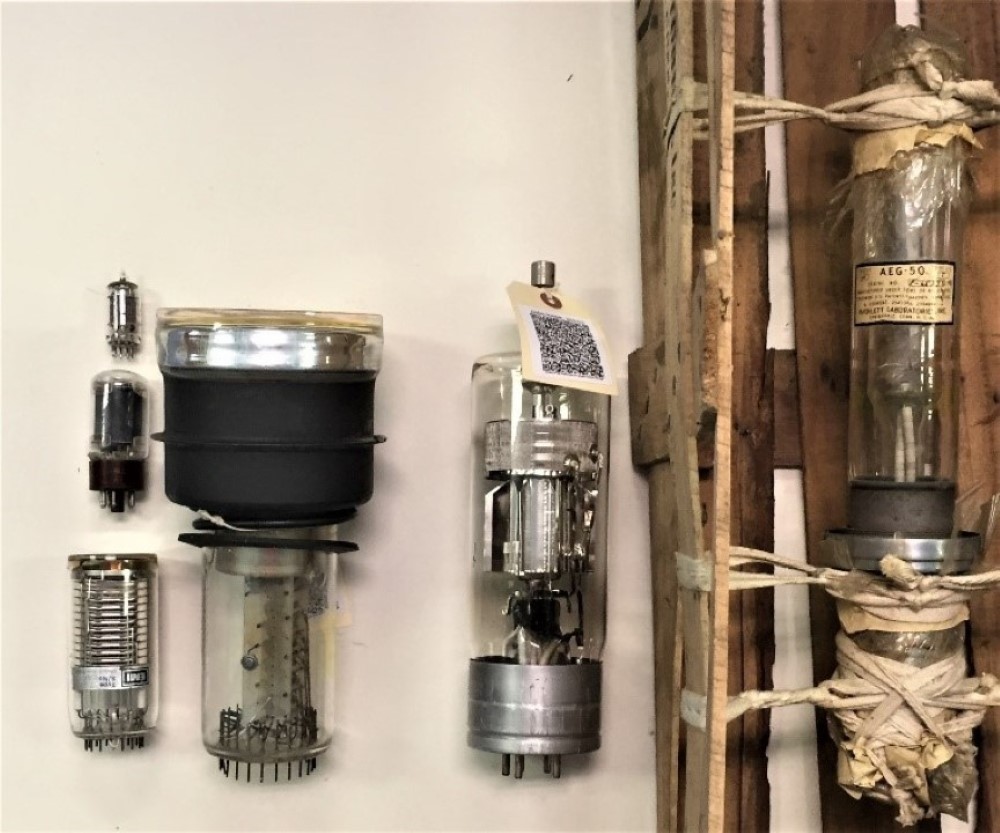
Most of the electronic devices used in the nuclear industry prior to 1960 relied on vacuum tubes. These elegantly-constructed devices, often also known as electron tubes, came in a wide variety of sizes ranging from relatively-simple, 5 cm tall diodes to high-voltage switching units that might be 80 cm in length. The intricacy in design and handiwork in the construction of many of these devices is exquisite. The development of transistors in the 1960s led to the demise of vacuum tubes for most applications.
The Society for the Preservation of Canada’s Nuclear Heritage Inc. has had a number of different types of vacuum tubes donated to it. Included in the collection are a number of photomultiplier tubes used to convert light from various radiation detectors into measurable electrical signals, a 50 kV tube for generating X-rays, a high-voltage switching tube and a number of electron-tube based modules from the first electronic computer at CRNL, the Datatron. We have hopes of acquiring one of the used, large (~30 cm diameter) photomultiplier tubes used in the SNO neutrino detector at Sudbury which had significant AECL participation.
Bob Howard, who for many years has been caretaking a wide-band radio receiver originally purchased by W.B. Lewis in 1962, has donated the unit to the Society. It was the last of the vacuum-tube based receivers made by the famed Eddystone company in England. Donated with the unit is correspondence between Lewis and the manufacturer on circuit changes to allow improvement in the linearity of the response at low frequencies. Lewis, with a background in electronics, performed these circuit changes himself.
Another variety of electron tubes which depended on a glow discharge rather than a vacuum were the cold-cathode “Nixie” tubes used extensively in radiation detection/counting equipment. These tubes were constructed with a series of wires shaped to form the numbers from 0 to 9. Circuitry driving the tubes would produce a glow discharge in the gas in the tube (typically neon) near the desired number allowing a visual readout. Because these cold cathode tubes did not rely on heating and cooling of wires, Nixie tubes operated at relatively high counting rates. To date the Society has failed to acquire any of the units and would appreciate any that might be gathering dust in someone’s collection. Contact Jim Ungrin at 613 584 3055 or ungrinjr@gmail.com if you are willing to expand the Society’s collection.
